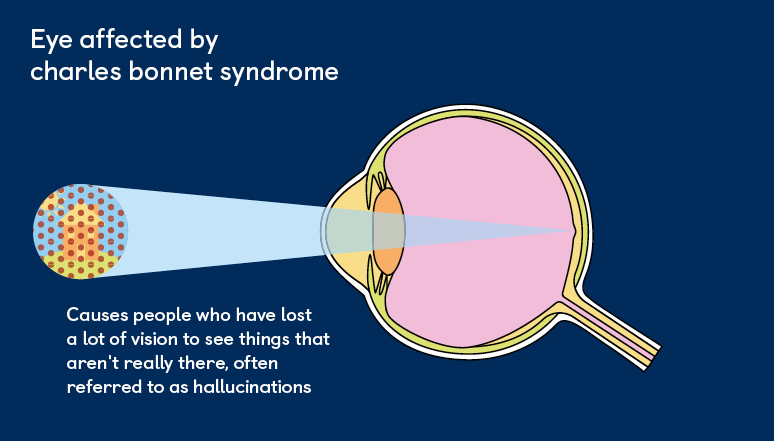It's important to me to write about this eye phenomenon that isn't talked about enough.
This is a syndrome that develops in a significant proportion of people who experience partial or complete loss of vision and causes visual hallucinations of things that do not exist.
According to studies, it turns out that the phenomenon is quite common in some eye diseases such as retinal degeneration, glaucoma, and diabetic retinopathy.
In an eye with normal vision, light entering the eye is received by the retina and translated by the brain into what we see.
When a person loses their vision, the visual system is unable to process new images that reach the eye. The brain, sensing the deficit, invents images or recreates images from the past, which is what causes visual hallucinations.
Visual hallucinations often (but not only) happen when you wake up from sleep, and what you see can include:
- Patterns of lines, dots or geometric shapes
- People, animals, insects
- Landscapes such as mountains or waterfalls
- People in period clothing, imaginary creatures
Hallucinations can last seconds, minutes, or even hours. They can be fixed in place or moving, in black and white or in color.
diagnosis
The diagnosis of the phenomenon is made by a doctor and by exclusion.
We check all medications taken by the patient (sometimes hallucinations can be caused by medications) and whether the person suffers from mental or neurological problems.
If all causes have been ruled out, the person suffers from Charles Bonnet syndrome.
There are several techniques for dealing with this phenomenon.
Just knowing that the problem is ocular and not caused by another factor reduces worry and anxiety.
The ophthalmologist should be consulted.
An optometrist should be consulted for low vision and attempts should be made to restore low vision using means to improve vision.
It should be shared with immediate family.
In order to reduce the phenomenon, changes in the immediate environment should be tried, such as different types of lighting, silence or surrounding noise, sometimes different eye movements and closing and opening the eyes.
Rest and stress, according to some people, affect the vision of hallucinations, especially immediately after vision loss, and can be worrying and stressful.
Hallucinations usually decrease significantly over time and even cease after a period of between one and two years.
Examples: Field of plants on the sofa

Geometric patterns






